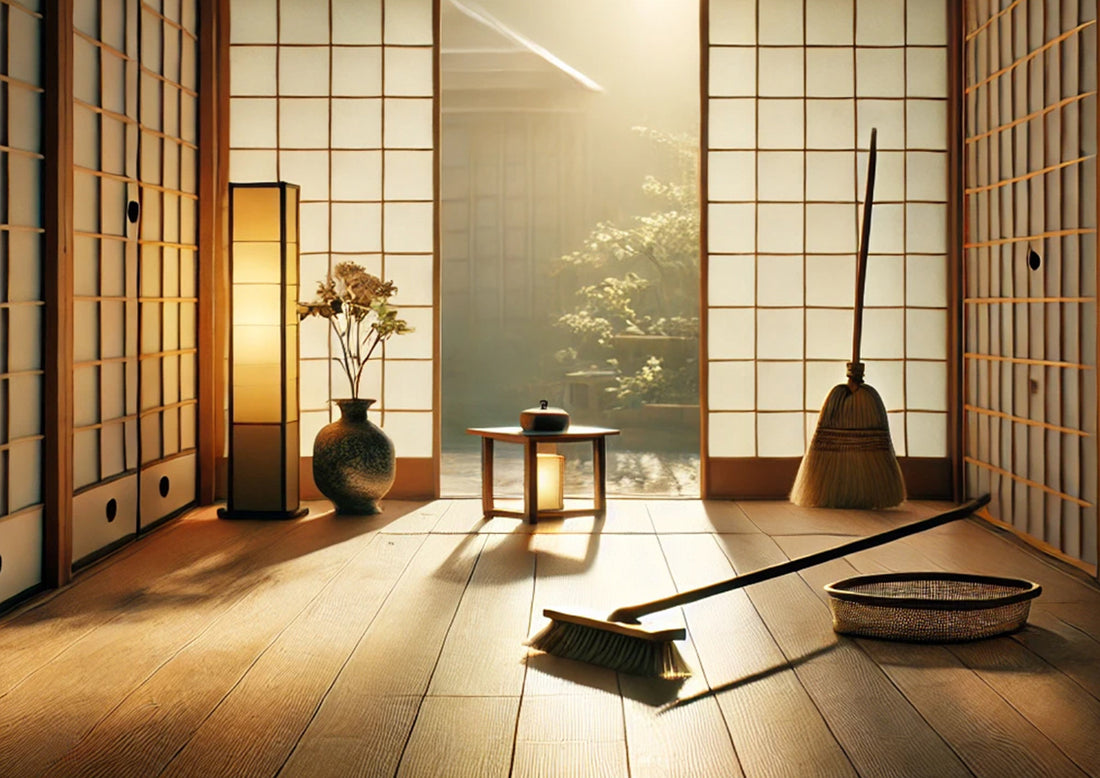As we approach the end of the year, we reflect on the beauty of Japanese traditions that inspire our daily lives. In Japan, December is a time for 'Ōsōji' (大掃除), the great year-end cleaning, symbolizing purification and preparation for the new year. This practice embodies the Japanese philosophy of simplicity and mindfulness, values that resonate deeply with us at KENKAWAI.
As a small business dedicated to promoting handmade goods and traditional craftsmanship, we are deeply grateful for your trust and support. Your appreciation of our thoughtfully crafted pieces allows us to continue sharing the timeless beauty of Japanese design with the world.
Wishing you a peaceful transition into the new year filled with simplicity and meaningful moments.

Ōsōji: The Japanese Year-End Tradition of Renewal
As the year draws to a close, Japan transforms into a country of focused activity, as families, businesses, and communities engage in the time-honored practice of Ōsōji (大掃除), or “great cleaning.” This annual ritual is much more than just tidying up; it embodies deep cultural values of renewal, mindfulness, and preparation for a fresh start. For centuries, Ōsōji has been a way to welcome the new year with a clean slate, both literally and spiritually.
The Origins of Ōsōji
Ōsōji has roots in Shinto traditions, where purification rituals are central. The practice involves cleaning physical spaces to remove dirt and clutter, as well as dispelling negative energies. In older times, people believed that Toshigami-sama (年神様), the god of the new year, would visit homes that were clean and orderly. A clean environment was seen as a sign of respect and readiness to receive blessings for the year ahead.
How Ōsōji Is Practiced
From small apartments to large temples, Ōsōji takes place everywhere in Japan during December. It’s often a collaborative effort, bringing families, colleagues, or community members together. Common tasks include:
Decluttering: Old belongings are sorted, with items either donated, recycled, or discarded. This echoes the modern-day practice of minimalism.
Deep Cleaning: Walls, floors, ceilings, and even hidden corners are scrubbed thoroughly.
Office and School Cleaning: In businesses and schools, employees and students clean desks, tools, and shared spaces, fostering a sense of teamwork and gratitude.
Temple Cleaning: Monks and volunteers clean temple grounds and altars in preparation for the New Year’s ceremonies.
Symbolism Beyond Cleaning
While the physical act of cleaning is important, Ōsōji carries symbolic significance:
Renewal: Cleaning out the old paves the way for new opportunities and experiences.
Mindfulness: The process encourages people to reflect on the past year and appreciate their surroundings.
Unity: Participating in Ōsōji together strengthens family and community bonds.

Modern-Day Relevance
In today’s fast-paced world, Ōsōji remains relevant as a way to reconnect with one’s environment and values. Many households incorporate modern tools and eco-friendly cleaning products to align with sustainable living practices. For businesses like ours at KENKAWAI, the philosophy behind Ōsōji resonates deeply with our commitment to mindful craftsmanship and quality.
Incorporate Ōsōji Into Your Life
Whether you’re in Japan or elsewhere, you can adopt aspects of Ōsōji to end the year meaningfully:
Start Small: Tackle one area of your home or workspace at a time.
Declutter Mindfully: Reflect on the purpose of each item and let go of those that no longer serve you.
Focus on Intentions: Use the act of cleaning to set positive intentions for the year ahead.
Involve Others: Make it a family or group activity to share the experience and deepen connections.
By embracing Ōsōji, you not only create a cleaner space but also cultivate a sense of calm and readiness for the new year.


